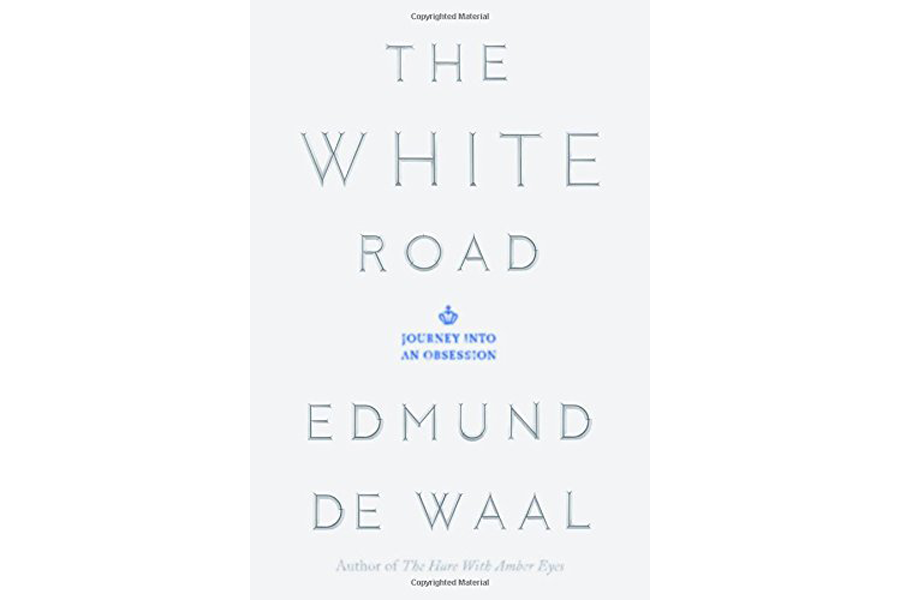'The White Road' is a gorgeous odyssey into the history of porcelain
Loading...
Substances we now consider commonplace were once the foundations of fortunes and empires. Sugar fueled European conquest of the Caribbean, drove much of the slave trade, and created fantastic wealth for plantation owners. English colonization of North America had its origins in tobacco. Yet a five-pound bag of sugar can now be bought in a local supermarket for $3.00 and a pack of cigarettes for $9.
Porcelain today is the stuff of dental crowns and electrical insulators – or the set of seldom-used china that sits on display in your grandmother’s dining room. Yet in imperial China a well-chosen gift of porcelain to the monarch could open doors to the highest levels of power. An outstanding porcelain collection was an essential status symbol for 18th-century European magnates. German princes emptied their treasuries to expand their collections (and of course, being Germans, their subjects coined a word specifically for the state of mind that led to this folly – Porzellankrankheit – literally, “porcelain sickness.”) The Elector of Saxony even traded 600 dragoons to the King of Prussia in exchange for his blue-and-white Chinese vases.
And the secret to making porcelain – which at first was a Chinese monopoly – was referred to in Europe as the Arcanum, the name originally given to the secret of the philosopher’s stone, the substance capable of turning common metals into gold.
Renowned artist Edmund de Waal, perhaps best known as the author of "The Hare with the Amber Eyes," explores the surprising history of porcelain in The White Road: Journey into an Obsession. De Waal literally travels around the world in his quest to learn more about his subject: from the Chinese city of Jingdezhen, home to a 1,000-year-old porcelain industry, to Ayoree Mountain in North Carolina, where in the 18th century an Englishman mined the five tons of clay that gave Josiah Wedgwood his start, and ultimately to Dachau, where the Nazis ran a porcelain factory with prison labor during the final years of the Third Reich.
At once meditation, memoir, and travelogue as well as history, "The White Road" is one of those unclassifiable books that simply astounds with the author’s infectious love of his subject. When he describes the experience of working with porcelain, his words almost tremble with wonder: “Pinch a walnut-sized piece between thumb and forefingers until the whorls of your fingers emerge. Keep pinching. It feels endless. You feel it get thinner and thinner until it is as thin as gold leaf…. [I]t is full of anticipation, of possibility….”
De Waal’s prose is both elegant and powerful. He can produce delightfully unexpected turns of phrase, as when he describes the way Louis XIV’s ministers spoke to him as “a delicate gavotte of suggestion,” or an English ceramicist’s quest to make porcelain whiter than Chinese porcelain as “an exhaustion of white.” But his prose it at is best when his words do not call attention to themselves, but convey his wonder at the quiddity of porcelain or at something as simple as a row of pots half in shadow: “Beautiful because you cannot see them in their entirety…. [S]hadows push profiles away. You can gain the shape of an idea by losing its particulars.”
But as the mention of the traded 600 dragoons and the porcelain factory at Dachau indicate, "The White Road" has a darker side. As with any art or industry, exploitation is all too common in the world of porcelain. In Jingdezhen, de Waal meets a man who assembles large pots for piecework. If one cracks when drying he’s held to blame and doesn’t get paid. He also meets a young woman who stencils designs on porcelain vases for 900 yuan ($142) a month. She gives almost all of it to her mother, keeping back a little for cigarettes.
However, "The White Road" still leaves me marveling at our species, particularly our remote ancestors, people most of us would consider primitive but who possessed a wealth of skills and knowledge lost to us. What to me is more astonishing than the role porcelain once played in commerce and politics is the fact that porcelain simply exists. What combination of intuition, skill, talent, and dogged work could have led Chinese potters to the discovery that ground petunse (a stone) combined with kaolin (a clay) heated to 1,300 degrees Celsius could produce a substance with “the whiteness, the hardness and the translucency, the beautiful resonance” of porcelain? In an age before thermometers, how did potters even know when kilns were hot enough? What knowledge have we lost?
And, despite covering so many places, so many historical periods, and so many themes, de Waal’s beautiful narrative voice and his love for his subject manage to shape this book into an almost seamlessly formed whole. Which leaves me with my one resentment regarding "The White Road": It’s damned unfair that such a distinguished artist should also be such a great writer.








